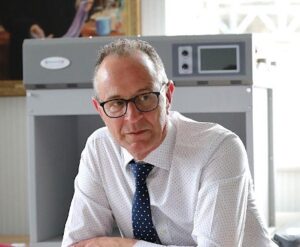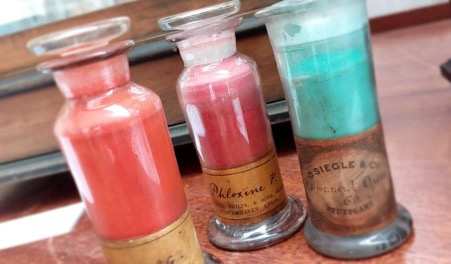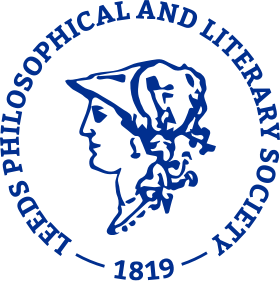Dyes and dyeing in Leeds – past and present
The evolving business and science of bringing colour into our lives – Andrew Filarowski, Deputy Chief Executive of the Society of Dyers and Colourists
Completion of the Aire and Calder Navigation in the early 18th century brought prosperity in coal and textiles to the town of Leeds. Names of great merchant and industrial families such as Thoresby, Oates, Marshall and Gott live on.
But what about the people who brought colour to our lives both in the supply of dyes in Leeds and the dyeing of the cloth? Their visible legacy lives on mainly in street names but these pioneers of science and research were part of a global industry from the beginning of Leeds’ dramatic industrial growth, with the use of natural dyes traded internationally, and extended through to synthetic dyes developed and traded around the world.
The importance of textiles and coloration to Leeds is highlighted in the founding of the Yorkshire College of Science (1874), with its early Dyeing Department, and continues to this day with the Leeds Institute of Textiles and Colour.
This talk looks at the locations of companies and their development. It also focuses on the people who brought and continue to bring colour to our lives. It takes you on a journey through the history of dyes and dyeing, explaining the transition from natural to synthetic dyes, and the effect this move had on the industry. While financially everything was good within the industry in its heyday, you will learn of some of the negative aspects of dyeing and the associated environmental impacts that became apparent.
This is told against a backdrop of local history and the dyers and dye makers of Leeds, who were innovators and developers of unique processes and were part of an international trade of major significance to the city.
Andrew also considers the demise of the industry, the movement of jobs, and environmental concerns created in other parts of the globe. He examines what the future holds for coloration, with some interesting moves back to where we were but also some interesting developments.

Andrew Filarowski CCol ASDC, Deputy Chief Executive of the Society of Dyers and Colourists, has over 20 years’ international experience of textile and business management in the textile industry.
A graduate in in Textile Chemistry of the University of Leeds, he began his career with Sandoz in auxiliaries and finishes carrying out comparative studies on products in the laboratory and in bulk at customers’ premises. In his next position he had responsibility for the installation of a QA laboratory that included physical and chemical testing and a colour management package as well as the implementation of ISO 9001. A career move led him to taking on responsibility for product development as a chemical supplier before moving into sales with Yorkshire Chemicals where his technical knowledge of the dyeing and finishing of polyester and its blends proved invaluable in delivering a technically focused sale.
In his current position he is responsible for the development of the Society’s training courses internationally. He is the secretary to BSI Colour Fastness and Colour Measurement committee TCI/81 and its mirror committee in ISO TC38. He is also instrumental in ensuring the Society maintains its position in the field of education in textile coloration and has responsibility for the internationally acclaimed publication the Colour Index. He ensures that the Society remains a technical professional body through its publications, seminars and conferences and continues to be relevant for professionals involved in the coloration industry.

Other events you might be interested in...
Explore more

Grants
The Society makes grants both to individuals and to organisations in support of cultural and scientific activities which increase innovation, outreach and diversity in Leeds and its immediate area. It also supports local museums and galleries and publications relating to the city.

Events
Since 1819, the Phil & Lit has been inviting the people of Leeds to hear from knowledgeable and entertaining speakers. Many are leaders in their field of science, arts or current affairs. We also hold an annual Science Fair and organise occasional visits.



